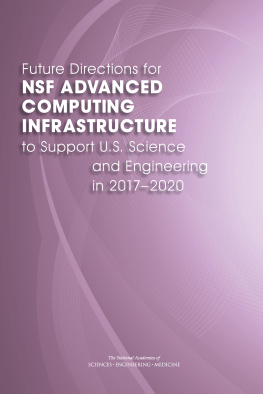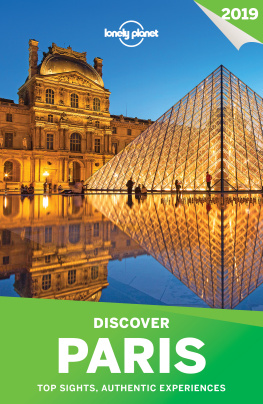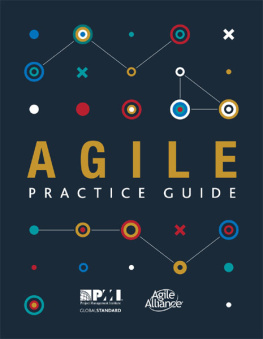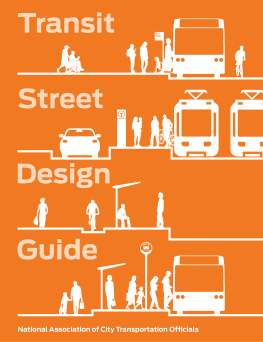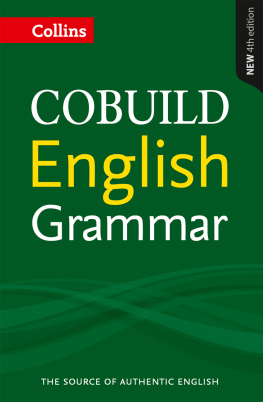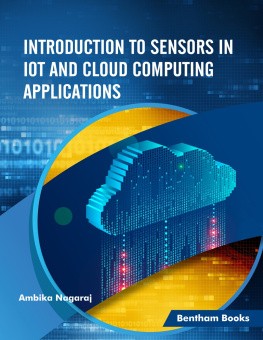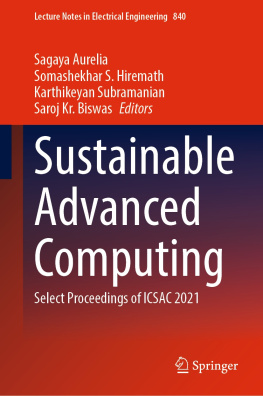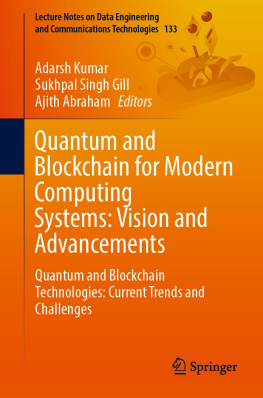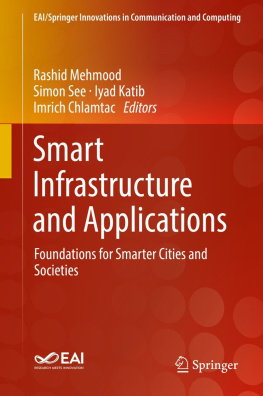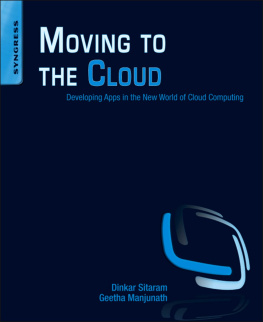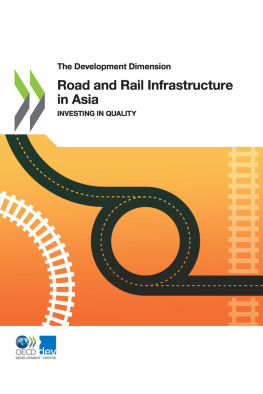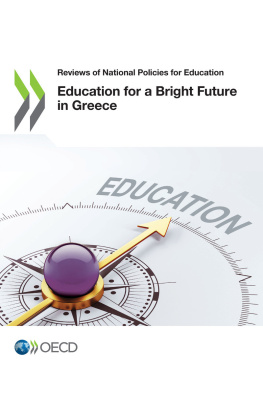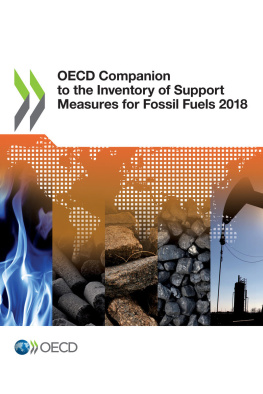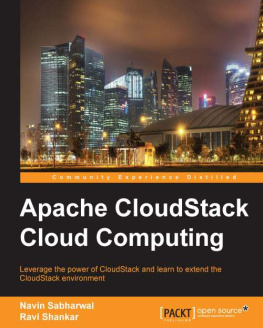coll. - Future Directions for NSF Advanced Computing Infrastructure to Support science
Here you can read online coll. - Future Directions for NSF Advanced Computing Infrastructure to Support science full text of the book (entire story) in english for free. Download pdf and epub, get meaning, cover and reviews about this ebook. year: 0, genre: Politics. Description of the work, (preface) as well as reviews are available. Best literature library LitArk.com created for fans of good reading and offers a wide selection of genres:
Romance novel
Science fiction
Adventure
Detective
Science
History
Home and family
Prose
Art
Politics
Computer
Non-fiction
Religion
Business
Children
Humor
Choose a favorite category and find really read worthwhile books. Enjoy immersion in the world of imagination, feel the emotions of the characters or learn something new for yourself, make an fascinating discovery.
Future Directions for NSF Advanced Computing Infrastructure to Support science: summary, description and annotation
We offer to read an annotation, description, summary or preface (depends on what the author of the book "Future Directions for NSF Advanced Computing Infrastructure to Support science" wrote himself). If you haven't found the necessary information about the book — write in the comments, we will try to find it.
coll.: author's other books
Who wrote Future Directions for NSF Advanced Computing Infrastructure to Support science? Find out the surname, the name of the author of the book and a list of all author's works by series.
Future Directions for NSF Advanced Computing Infrastructure to Support science — read online for free the complete book (whole text) full work
Below is the text of the book, divided by pages. System saving the place of the last page read, allows you to conveniently read the book "Future Directions for NSF Advanced Computing Infrastructure to Support science" online for free, without having to search again every time where you left off. Put a bookmark, and you can go to the page where you finished reading at any time.
Font size:
Interval:
Bookmark:

List of Individuals, Research Groups, and Organizations That Submitted Comments
Jay Alameda, National Center for Supercomputing Applications, University of Illinois, Urbana-Champaign
Richard B. Arthur, GE Global Research
Dan Atkins, University of Michigan
Nadine Aubry, Northeastern University
Troy Baer, University of Tennessee
Jim Belak, Lawrence Livermore National Laboratory
Francine Berman, Rensselaer Polytechnic Institute
Prentice Bisbal, Rutgers University
Alan Blatecky, RTI International
Adam Bowser, on behalf of The University Corporation for Advanced Internet Development (Internet2)
Robert F. Brammer, Brammer Technology, LLC
James G. Brasseur, Pennsylvania State University
Danielle Chandler, University of Illinois, Urbana-Champaign, on behalf of the Theoretical and Computational Biophysics Group
Coalition for Academic Scientific Computation, comments collected from senior U.S. cyberinfrastructure facility directors
Coalition for Academic Scientific Computation, comments from members (individual opinions)
Ronald Cohen, Carnegie Institution
Computing Community Consortium, Computing Research Association
George W. Crabtree, Argonne National Laboratory
Alan Crosswalk, Columbia University
Timothy Alden Davis, Texas A&M University
Carleton DeTar, University of Utah
Thom Dunning, Pacific Northwest National Laboratory and University of Washington
Rodolfo Barniol Duran, Purdue University
Bruce G. Elmegreen, IBM T.J. Watson Research Center
Ian Foster, University of Chicago
Lars Grabow, University of Houston
Victor Hazlewood, University of Tennessee
Hendrik Heinz, University of Akron on behalf of faculty of the College of Polymer Science and Engineering
Tony Hey, University of Washington eScience Institute
Alvin Kennedy, Morgan State University
Rubin H. Landau, Oregon State University
Randall LeVeque, University of Washington
Zachary H. Levine, National Institute of Standards and Technology
David A. Lifka, Cornell University
Yangzheng Lin, Carnegie Institution
Glenn K. Lockwood, 10X Genomics
Paul B. Mackenzie, Fermi National Accelerator Laboratory, on behalf of the U.S. Lattice Quantum Chromodynamics Collaboration
Jan Mandel, University of Colorado, Denver
Thomas A. Manz, New Mexico State University
J. Andrew McCammon, University of California, San Diego
Jonathan C. McKinney, University of Maryland
Charles Meneveau, Johns Hopkins University
Blake Mertz, West Virginia University
Rajat Mittal, Johns Hopkins University
Colin Morningstar, Carnegie Mellon University
Lawrence Murakami, University of Alaska
Annick Pouquet, University of Colorado, Boulder
Jeff F. Pummel, University of Arkansas
Ralph Roskies, Pittsburgh Supercomputing Center, University of Pittsburgh
Barry I. Schneider, National Institute of Standards and Technology
Bill Schultz, University of Michigan
Jerome Soller, CogniTech Corporation
James M. Stone, Princeton University
Alexander Tchekhovskoy, University of California, Berkeley
Greg van Anders, University of Michigan
Chris Van de Walle, University of California, Santa Barbara
Nancy Wilkins-Diehr, University of California, San Diego
Walt Wright, Check Twelve Leadership
P.K. Yeung, Georgia Institute of Technology
Peijun Zhang, Carnegie Institution
Information-Gathering Meetings
April 15, 2014, by telephone
Briefings from Irene Qualters, National Science Foundation (NSF), and Peter Arzberger, NSF
May 16, 2014, Washington, D.C.
Briefings from Michael Norman, San Diego Supercomputer Center; Michael Vogelius, NSF; Bogdan Mihaila, NSF; Jeryl Mumpower, NSF; and Eva Zanzerkia, NSF
November 19, 2014, Birds-of-a-feather session at SC-14, New Orleans, Louisiana
December 16-17, 2014, Workshop in Mountain View, California
Participants: Christian Ott, Caltech; Thomas Cheatham, University of Utah; Tom Jordan, University of Southern California; Steven Gottlieb, Indiana University; Tony Hey, Microsoft, by telephone; Ilkay Altintas, San Diego Supercomputer Center; Jacek Becla, SLAC National Accelerator Laboratory; Victoria Stodden, University of Illinois, Urbana-Champaign; and Ed Lazowska, University of Washington
February 19, 2015
Briefings from Jim Kurose, NSF; Irene Qualters, NSF; Rudi Eigenmann, NSF; and Steven Binkley, Department of Energy Office of Science
Biosketches of Committee Members
WILLIAM D. GROPP, Co-Chair, is the Thomas M. Siebel Chair in Computer Science at the University of Illinois, Urbana-Champaign, where he is also founding director of the Parallel Computing Institute. He held the positions of assistant (1982-1988) and associate (1988-1990) professor in the Computer Science Department at Yale University. In 1990, he joined the Numerical Analysis group at Argonne National Laboratory (ANL), where he was a senior computer scientist in the Mathematics and Computer Science Division, a senior scientist in the Department of Computer Science at the University of Chicago, and a senior fellow in the Argonne-Chicago Computation Institute. From 2000 through 2006, he was deputy director of the Mathematics and Computer Science Division at ANL. In 2007, he joined the University of Illinois, Urbana-Champaign, as the Paul and Cynthia Saylor Professor in the Department of Computer Science. In 2008, he was appointed deputy director for research for the Institute of Advanced Computing Applications and Technologies at the University of Illinois. His research interests are in parallel computing, software for scientific computing, and numerical methods for partial differential equations. He has played a major role in the development of the MPI message-passing standard, is one of the designers of the PETSc parallel numerical library, and has developed efficient and scalable parallel algorithms for the solution of linear and non-linear equations. Dr. Gropp is a fellow of the Association for Computing Machinery (ACM), the Institute of Electrical and Electronics Engineers (IEEE), and the Society for Industrial and Applied Mathematics (SIAM) and a member of the National Academy of Engineering. He received the Sidney Fernbach Award from the IEEE Computer Society in 2008 and the Technical Committee on Scalable Computing Award for Excellence in Scalable Computing in 2010. Dr. Gropp received his B.S. in mathematics from Case Western Reserve University, an M.S. in physics from the University of Washington, and a Ph.D. in computer science from Stanford University.
ROBERT J. HARRISON, Co-Chair, is director, Institute of Advanced Scientific Computing, Stony Brook University, and director, Computational Science Center, Brookhaven National Laboratory. The core mission of the new Stony Brook institute is to advance the science of computing and its applications to solving complex problems in the physical sciences, the life sciences, medicine, sociology, industry, and finance. The institute works closely with the Brookhaven center, which specializes in data-intensive computing. Dr. Harrisons research interests are focused on scientific computing and the development of computational chemistry methods for the worlds most technologically advanced supercomputers. From 2002 to 2012, he was director of the Joint Institute of Computational Science and professor of chemistry and corporate fellow at the University of Tennessee and Oak Ridge National Laboratory. Prior positions were at the Environmental Molecular Sciences Laboratory, Pacific Northwest Laboratory, and ANL. He has a prolific career in high-performance computing, with more than 100 publications on the subject, as well as extensive service on national advisory committees. He received his B.A. from Churchill College, University of Cambridge, and his Ph.D. in organic and theoretical chemistry from the University of Cambridge.
Next pageFont size:
Interval:
Bookmark:
Similar books «Future Directions for NSF Advanced Computing Infrastructure to Support science»
Look at similar books to Future Directions for NSF Advanced Computing Infrastructure to Support science. We have selected literature similar in name and meaning in the hope of providing readers with more options to find new, interesting, not yet read works.
Discussion, reviews of the book Future Directions for NSF Advanced Computing Infrastructure to Support science and just readers' own opinions. Leave your comments, write what you think about the work, its meaning or the main characters. Specify what exactly you liked and what you didn't like, and why you think so.

